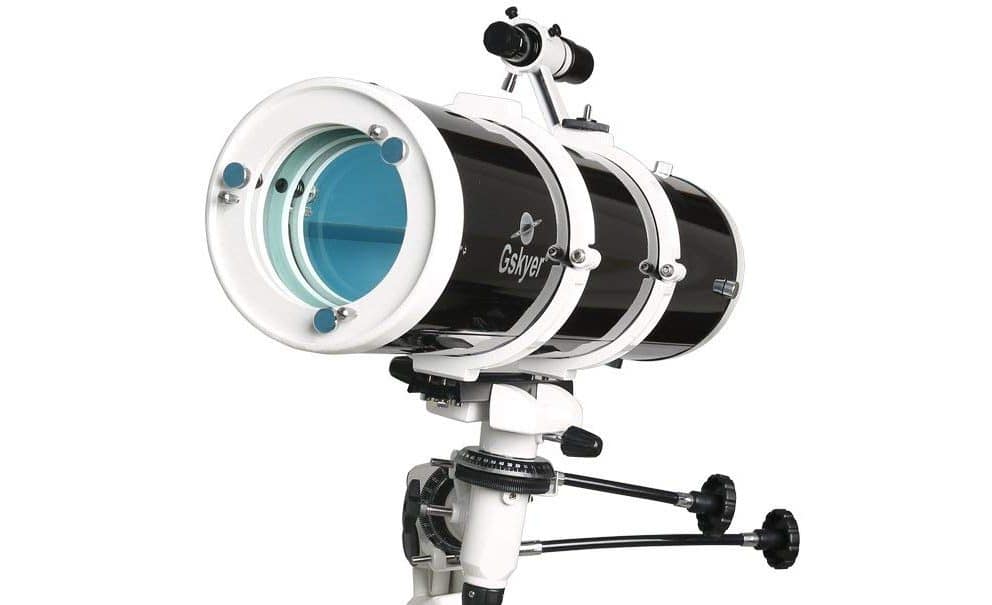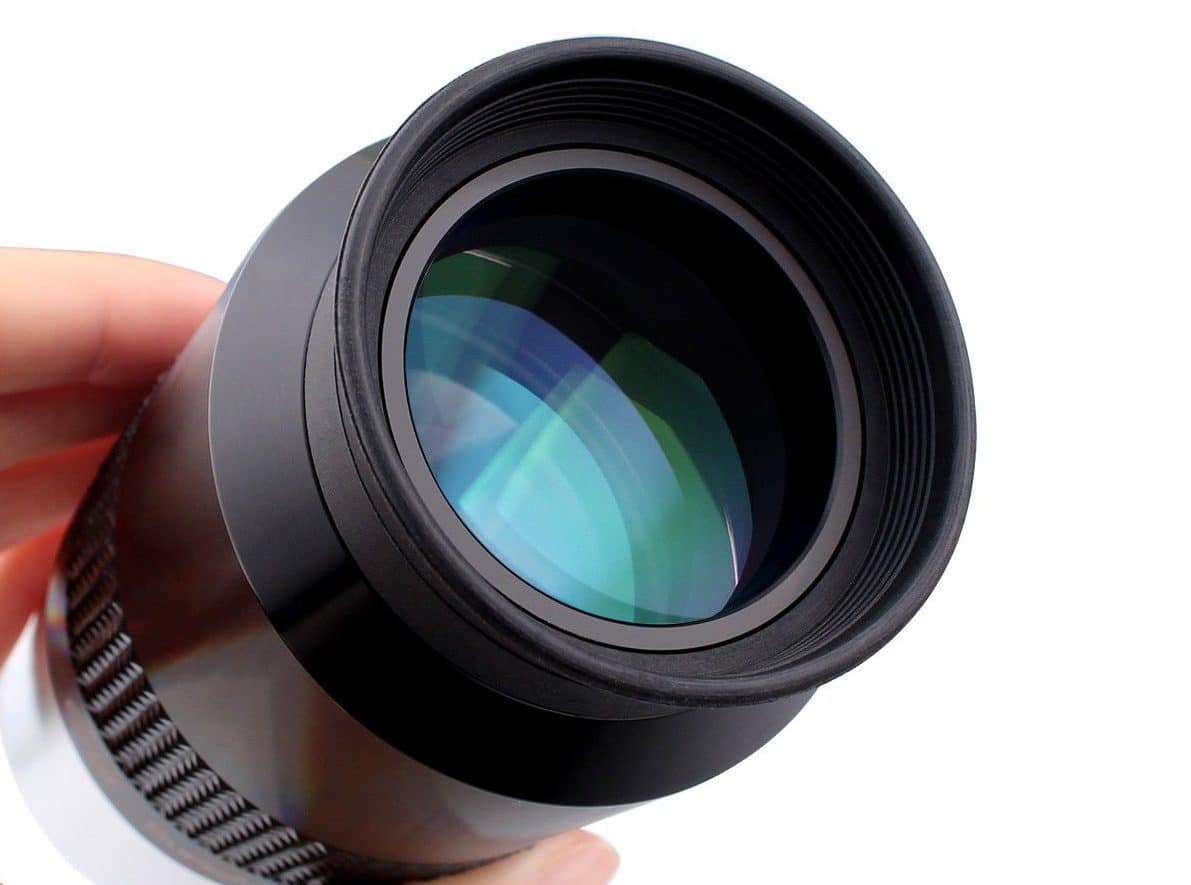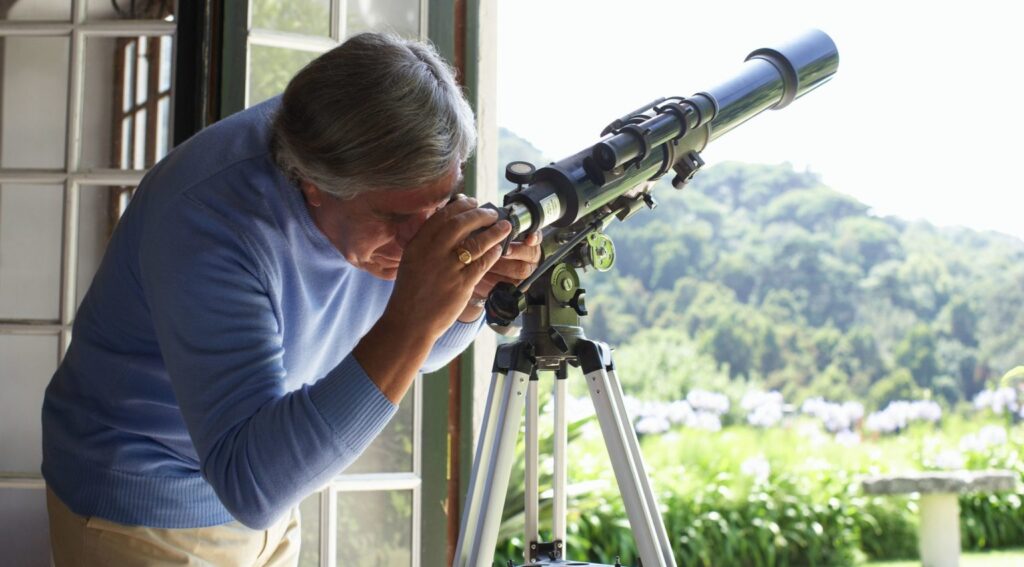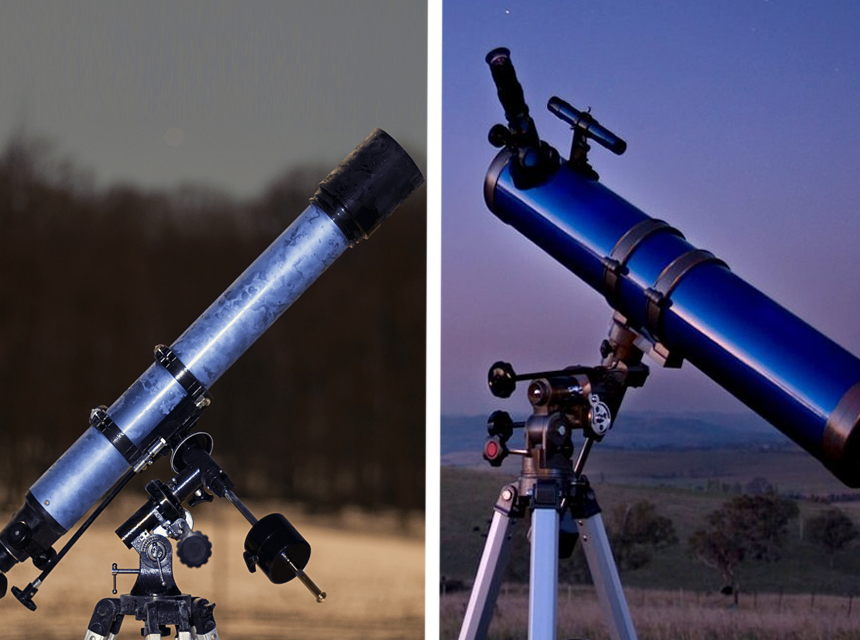The sky above gives you a lovely view of our universe. Of course, you only get a glimpse of its beauty with the naked eye. Having a telescope can show you a brighter, more revealing picture of what our galaxy contains and see the planets with your own eyes. Many of the telescopes available today can cost a small fortune, but if you need a cheaper model, the best telescope under $300 can likely suit your purpose.
If you are in the market for a new telescope, there are a few important features you should check out to ensure you have the right one to meet your needs. First, there are two basic types to choose from, refractor or reflector telescopes. You also need to look at the aperture which is the diameter of the lens or mirror that gathers the light. The focal length is also significant, so you know the telescope’s magnification. There are also two different mount options, an altazimuth or an equatorial mount, both of which have their benefits and their flaws. The right eyepiece is also needed.
In order to help you find the best telescope under $300, we’ve spent numerous hours reading telescope manufacturers information and hundreds of reviews. Then we tested as many products as we could get our hands on before choosing our top five. We also created a comparison table, with a rating for each product, and even included a buying guide beneath our descriptions to ensure you have all the info needed to choose your next telescope.
More features: features a 4.5” primary mirror; includes StarPointer red dot finderscope and free Starry Night astronomy software
The Celestron 114LCM telescope is the largest model available in the LCM line. This reflector telescope features a 4.5-inch primary mirror that gathers enough light to see the fine details of any of the celestial objects you are interested in. The LCM part of the name stands of Lightweight Computerized Mount, which helps you locate thousands of objects in the sky.
On the tripod, there is a hand control with a database that allows you to select whatever object you’re looking for. The telescope then finds it in the sky, centering it in the eyepiece for your viewing pleasure.
If you are unsure what you want to see, you can also push the Sky Tour button. This feature brings up a list of objects currently visible in the sky for you to choose from. Even beginners will have no trouble setting this up by using the SkyAlign system. Just find the moon, enter the date and time, and press a button. The telescope aligns itself, using a computerized tracking system to chart the sky.
Other handy features that both beginners and experts will love are the red dot finder, the two included eyepieces, and the included “The SkyX” planetarium disc. All the features may just make this the best telescope under $300 with GoTo there is.
More features: includes Star Target Planisphere and MoonMap 260
Though this is a great beginner telescope, even experts in astronomy will appreciate the views and accessories that come with it. The Orion StarBlast II uses a 4.5-inch aperture reflector tube that collects a huge amount of light to show you crystal clear images.
The equatorial, or EQ, mount is equipped with slow-motion controls, which makes it easy for you to keep any moving object centered in the eyepiece. You can also add an electronic motor drive to track those objects automatically, though this piece needs to be purchased separately.
The aluminum tripod is adjustable, so you can set it to the height you want to do your viewing comfortably. There is also an accessory tray held between the three legs for easy access.
Included with the StarBlast II are 25mm and 10mm Sirius Plossl eyepieces, which offer different magnifications for finding objects or viewing them up close. The Shorty 2x Barlow multicoated lens lets you double the magnification on both eyepieces as well. An Orion EZ Finder II red-dot sight is included to help aim your telescope.
Another handy accessory is the Orion MoonMap 260, which helps you locate various features of the Moon. The Orion Telescope Observer’s Guidebook shows beginners over 60 exciting objects in the sky to look for. A RedBeam Mimi LED light lets you see maps in the dark.
More features: comes with a fully integrated smartphone adapter built-in; red LED flashlight stowed in the center of the mount head
Beginner and intermediate astronomers will love how easy this telescope is to use, as well as its great features. The Celestron Inspire 100AZ combines a 100mm aperture with its short tube to give you an extra wide field of view. This makes it easier to see objects that are a bit fainter in the sky.
Two eyepieces are included, a 20mm and a 10mm Kellner. There is also a StarPointer Pro finderscope to help you aim your tool. The focus micrometer uses a numbered scale that shows you exactly where the focuser is positioned. This helps you quickly return to any specific point you like if you drift away from it or look at something else.
One unique feature this telescope has is the lens cap, which has an integrated smartphone adapter built right into it. You can put your phone on the rubberized friction surface, so it is positioned to view through the imaging point, then secure it with the included bungee cords. Once it is in position, you can use your smartphone to take pictures of the high power images seen through the telescope. This feature alone makes this the best telescope under $300 with some type of camera attachment.
Located on the mount is a built-in red LED flashlight that can be used to light up the accessory tray on the sturdy tripod or removed to use separately as needed.
More features: one-year limited warranty; includes a free Special Edition of Starry Night astronomy software
Though it is a bit heavy to carry around with you every day, this sleek telescope from Orion is easy to set up anywhere. It has a solid, sturdy build that will last for years, but Orion also offers a one-year limited warranty in case of unexpected issues.
This could be the best entry level telescope under $300, thanks to its low price and easy to use features. It is a Dobsonian reflector telescope, with a six-inch parabolic mirror to bring the moon and other nearby objects into clear focus. This mirror also grasps enough light to allow deep-sky viewing, bringing star clusters, nebulas, and galaxies all within range.
The base on the SkyQuest is sturdy enough to create vibration-free images, even when you’re using high-power lenses and eyepieces. Moving the telescope to track the objects in the sky is also smooth, so you don’t lose what you’re looking at.
The 25mm Sirius Plossl eyepiece is located near the front of the telescope, so you can see objects right above you without crouching near the ground. There are also a two-inch Crayford focuser and an EZ Finder II aiming device to make it even easier to find the celestial bodies you’re looking for. A carry handle on the bottom makes it easy to move it when needed.
More features: features multi antireflection green film optical coating; 1.27-inch stainless steel tripod
The Gskyer Powerseeker 90600AZ may not have all the bells and whistles of a more expensive model, but it is still an excellent option for the money. It is a refractor telescope, with a glass lens that is fully coated with an antireflection blue film to keep images crisp and clear.
This telescope comes with three high power eyepieces offering you 24X, 60X, and 120X magnifications. This allows you to choose which one to use based on how far away the object is. Distant objects, like planets or the moon, are clear and detailed, while wildlife and other nearby objects are brought in for closer inspection.
The Powerseeker features a 90mm aperture, with a focal length of 600mm. The tube is made of integral forming aluminum, which mounts easily into the included dovetail bracket. This system holds the tube firm, with no wobbling on the stainless steel tripod while you’re adjusting it or looking at the sky.
Another great feature is the altazimuth mount, which uses a slow motion control to help you track those celestial bodies across the sky. On the tripod is an accessories tray to hold those eyepieces or other items needed. This keeps everything close at hand, so they can be easily found, even on the darkest night.
Now that you’ve read all of our reviews, you may think you’re ready to head out and get yourself a brand new telescope. However, there are a number of telescope features that may need a bit more explanation. To help you know exactly what you’re getting, check out the following buying guide, so you know what each feature is and what it is used for. Then you’ll have a better understanding of which type of telescope is the best one for your specific use.
One of the most important parts of caring for a telescope it keeping it clean. Dirt can get on the lenses or the mirrors, which will scatter the light, making the objects you’re viewing less crisp. To combat this, there are a few things you should do.
First, always use the lens cap when not using the telescope. The eyepiece holder should be stored in a case as well. The eyepieces themselves need to be capped on both ends and stored in a proper durable case. Store the reflectors and their mirrors facing down so dust won’t settle on their surfaces. Don’t touch the lens or mirror surfaces to prevent the oil on your skin from deteriorating the optical coatings.
Clean your telescope and its accessories only when needed, as cleaning could cause tiny scratches in the components. If cleaning is needed, do so carefully. For the lenses, place your finger over the eyepiece without touching the glass and suck the air up from under your finger. You can also use a camel’s hair brush, which has soft bristles that likely won’t scrape the lens. If these methods don’t remove the dirt, you can use a lens-cleaning solution like pure isopropyl alcohol or methyl alcohol and a grit-free wipe.
Cleaning a mirror takes a bit more effort since you’ll need to take apart the telescope to do so. Once you’ve removed the mirror, place it face-up on a towel in the sink. Rinse it with room-temperature water until the dust and grit are removed. Then rinse off the mirror with distilled or demineralized water to ensure no mineral deposits are left behind. Let it dry, wiping with the corner of a paper towel if necessary.
If you’re in the market for a new telescope, you should first know what its main features are all for. The following is a basic guide to the most important characteristics of any telescope.
There are two main types of telescopes out there. The refractors, like the Celestron Inspire 100AZ, have a glass lens located at the front of the tube. This lens bends the light that passes through it. They are quite easy to maintain but can be a bit expensive for a higher aperture.
A reflector telescope (like Orion StarBlast II 4.5) uses a mirror instead of the glass lens, which is located near the rear of the telescope tube. It bounces, or reflects, the light off the mirror. These types of telescopes reflect the wavelengths all the same way, so there is no chromatic aberration to deal with. They are also cheaper to make.

The focal length refers to the distance between the telescope’s mirror or lens and the focus point where the light rays come together.
This helps determine the magnification that can be delivered with the eyepiece – just divide the telescope’s focal length by the eyepiece’s focal length.
When checking out telescopes, there are two main types of mounts available. The first is the altazimuth, or alt-az, mount. This is the simplest type, with altitude (vertical) and azimuth (horizontal) motions. Most models include slow-motion knobs for precise adjustments when trying to track an object across the sky, and sometimes include a computer for automatic tracking. This type of mount is best used for scanning at low power or observing objects.
Equatorial mounts are considered the superior mount for astrophotography and observing objects for longer periods of time. It can be aimed at any celestial object and easily guided manually using slow-motion controls or an electric motor.

Though larger telescopes have more light gathering capacity and are better for looking at deep-sky objects, they are also heavier than other smaller models. This makes them a bit less portable.
If you’ll just be setting it up at home and leaving it put, this won’t be an issue. But if you plan to use your telescope away from home, the more it weighs, the harder it is to carry around.
The length of a telescope determines the field of view. The shorter the focal length, the wider this field will be, which is essential for deep-sky viewing. Longer tubes create longer focal lengths, showing you a narrower patch of sky for those seeking smaller objects, such as planets or the surface of the Moon.
The warranty is also an extra to check out. Though a decent telescope should last for years, there could be issues you are not prepared for. The better and more extended the warranty, the more piece of mind you’ll have when using it.
An accessory tray is handy to hold your extras within reach. Instructional DVDs, star maps, and other astrological guides make it easy to find what you’re looking for or show you things you may not even know you want to see.
A finderscope helps you aim the telescope, sometimes with a red light for easy viewing. A camera attachment or smartphone adapter is another handy feature to look for as it lets you take pictures of what you’re seeing.
Having the best telescope under $300 can open up the universe to you without breaking your budget. Though all the models above are great options, the Celestron 114LCM is our top choice. It has that Lightweight Computerized Mount and the hand control with a database for finding any object in the sky. It also has the Sky Tour option and comes with a SKYX planetarium disc for easy aiming.
At a close second is the Orion StarBlast II 4.5, with an EQ mount featuring slow motion controls and an adjustable tripod with an accessory tray. It also includes a number of handy accessories, like the red mini LED light, two eyepieces, an Orion Moonmap 260, and an Orion Telescope Observer’s Guidebook.
The Celestron Inspire 100AZ is the cheapest model on our list but still has everything a great telescope needs, plus a few extras, like the built-in removable red LED light, the Skypointer Pro finderscope, and the unique smartphone adapter you can use to photograph images seen through the telescope.
If you are still in search for a different telescope model with an extended budget, you should consider telescopes for under 500 dollars. Yet, if the budget is of more concern, let’s see which telescope you can buy for less than $200 price.





